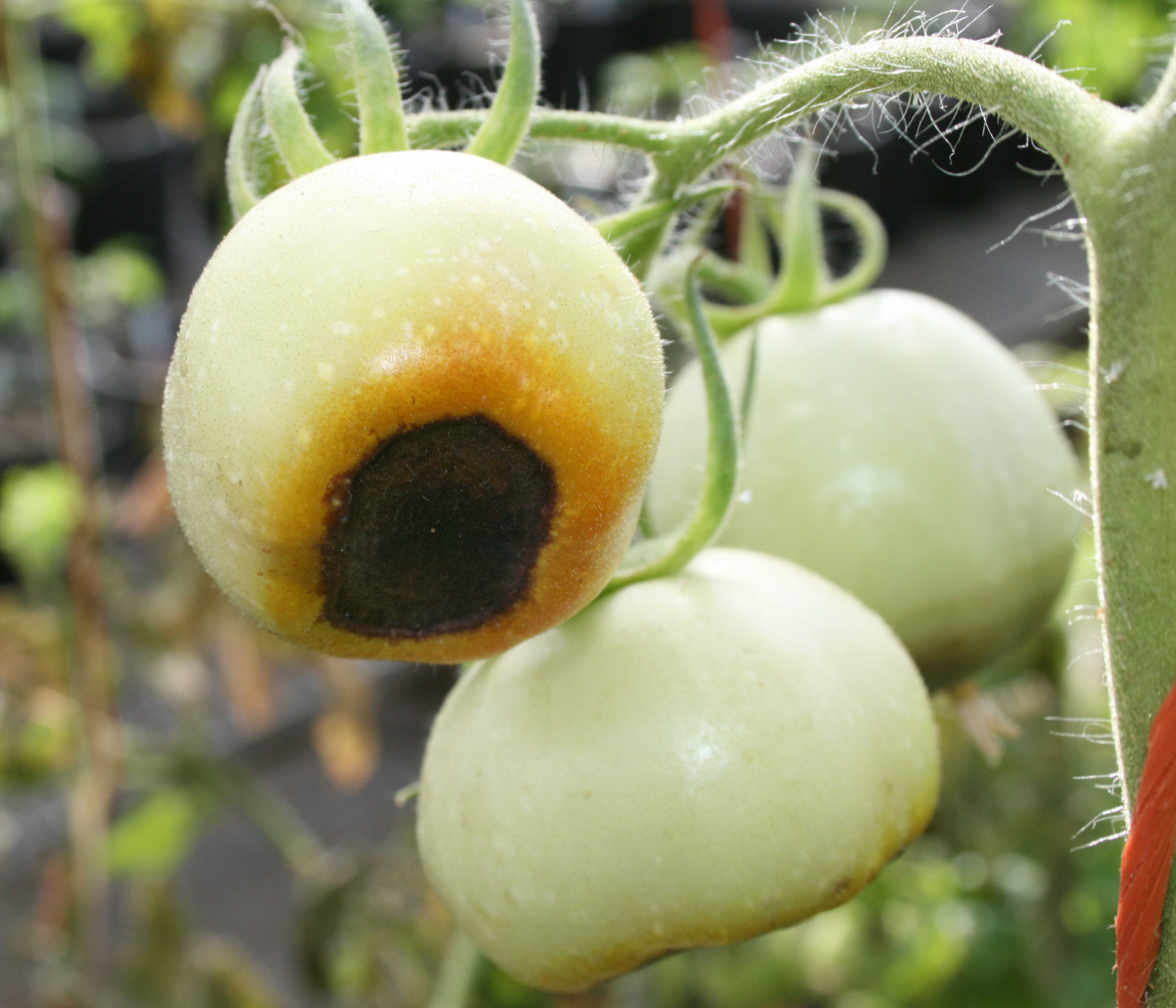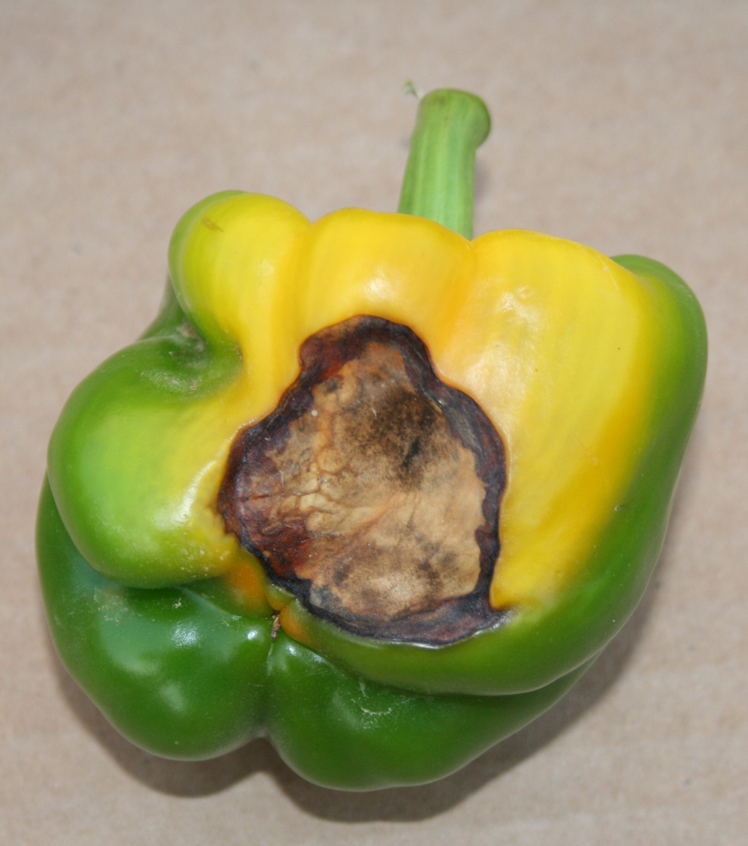Blossom End Rot of Solanaceous Crops
Return to Physiological and Nutrient Disorders
Blossom end rot is caused by inadequate translocation of calcium through the plant during fruit development. Kentucky soils are not typically deficient in calcium, and so this issue is usually not due to insufficient soil calcium levels but rather inadequate soil moisture to deliver the calcium to the plant and fruit. Once the condition has developed, it cannot be corrected on affected fruit; improved water management can prevent further loss.

Blossom end rot on tomato.
(Photo: UK Vegetable IPM Team)

Blossom end rot on pepper.
(Photo: UK Vegetable IPM Team)
